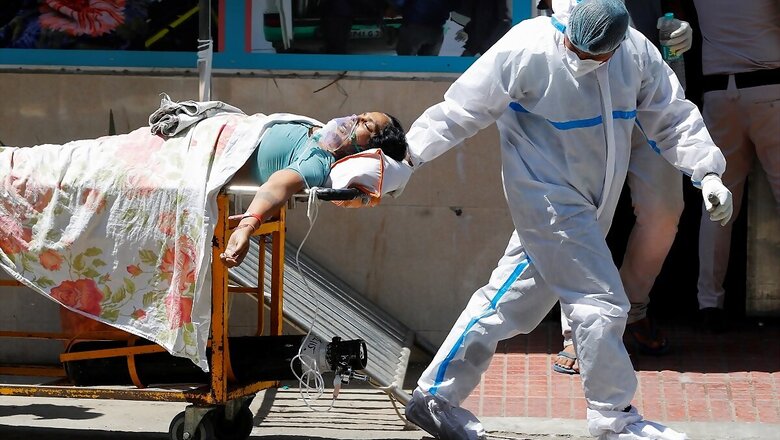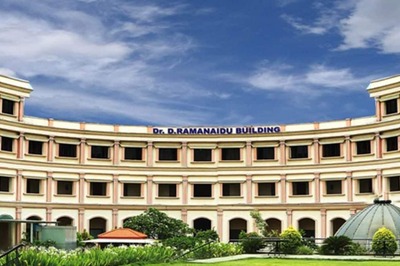
views
A week after the new government was sworn in West Bengal, the adjacent districts of Kolkata and North 24 Parganas continue to be among the epicenters of Covid-19. The Centre has said nearly half the people who have been tested here over the last one week have are positive. These are among the 20 such districts in India reporting such high positivity rates.
The weekly positivity rate from May 4 to 10 of Kolkata and North 24 Parganas districts was pegged at 44.4% and 46.7%, respectively. The daily bulletin from West Bengal government reiterated the alarming situation as both districts together are reporting nearly 50,000 active cases which is 40% of all active cases in the state. Eight thousand fresh cases and 76 deaths were reported from these districts on Tuesday.
There is no full lockdown in Kolkata or the North 24 Parganas as Chief Minister Mamata Banerjee has ruled out one saying livelihoods are also important. She said only a “self-imposed lockdown-like situation” could save Bengal and people should remain indoors. However, the strategy does not seem to be helping so far as the number of fresh cases reported in Kolkata and North 24 Parganas have not gone down since May 2.
Fresh cases reported in West Bengal, in fact, crossed 20,000 for the first time on Tuesday and active cases are over 1.27 lakh. The daily positivity rate in West Bengal stands at nearly 30%. The state government had ordered the shutting down of malls, cinemas, restaurants and bars, gyms and parlours since May 1. Market timings stand restricted and travel to the state required a RT-PCR report.
20 districts with nearly 50% Positivity Rate
The Centre on Tuesday released a list of districts with high test positivity rates between May 4-10, in which 20 districts have rates of above 45%. These included Bikaner and Rajsamand districts of Rajasthan with 64.7% and 53.8% positivity rate, respectively and North Goa and South Goa with 52.4% and 45.9% weekly positivity rate, respectively. Nuh district in Haryana near Delhi was also identified with a high 55.8% positivity rate along with Sonipat (49.9%) and Panipat (47.7%), while Kalahandi and Sambalpur in Odisha were enmarked as districts with 46.7% and 46.6% weekly test positivity rate. In Madhya Pradesh, Shahdol and Vidisha districts are the worst-affected with 49.2% and 45.6% test positivity rate for May 4 to May 10, while Chhattisgarh’s Janjgir Champa was identified with a positivity rate of almost 46%. Karnataka also has two worrisome districts in Uttara Kannada and Ballari at 45.7% and 44.3%, respectively.
What should be done?
A senior Central government official told News18 that in a situation of such high positivity rate, strong micro-containment measures need to be adopted by the district authorities, including night curfew, aggressive testing and contact tracing. “There is no other option but to put a night curfew and a strict lockdown for two weeks to break the chain of transmission,” the senior government official said.
The government in a press briefing on Tuesday cited the Pune-model where the weekly test positivity rate was 69.7% in the first week of March and then night curfew was imposed. After 15 days, even more stringent measures were adopted in Pune which brought down the test positivity rate to 23.4%. Night curfew coupled with restrictions on mass gathering and ensuring non-essential activities can be delayed for two weeks is essential to stop the spread of infection, the government said on Tuesday.
Read all the Latest News, Breaking News and Coronavirus News here. Follow us on Facebook, Twitter and Telegram.




















Comments
0 comment